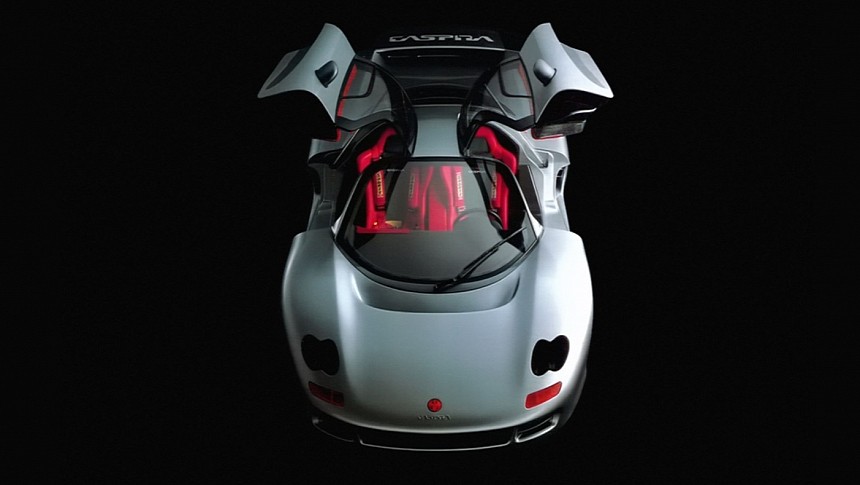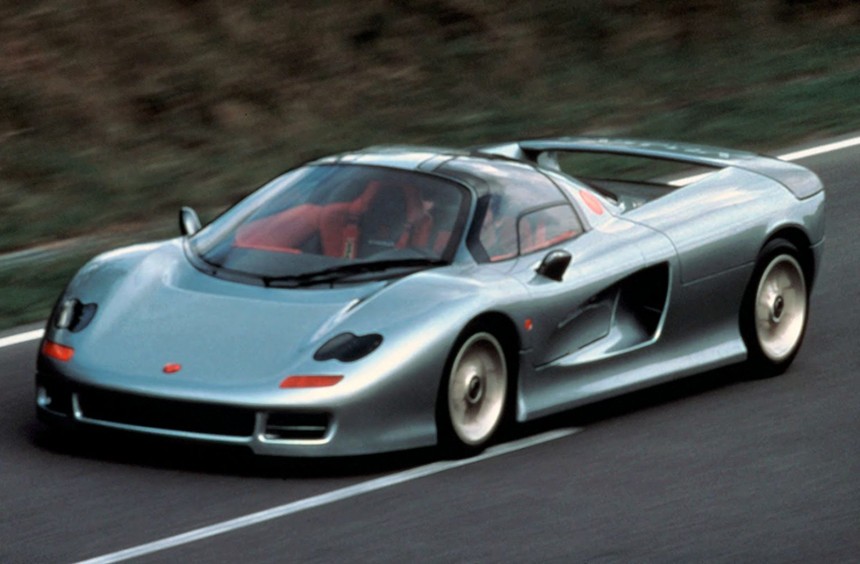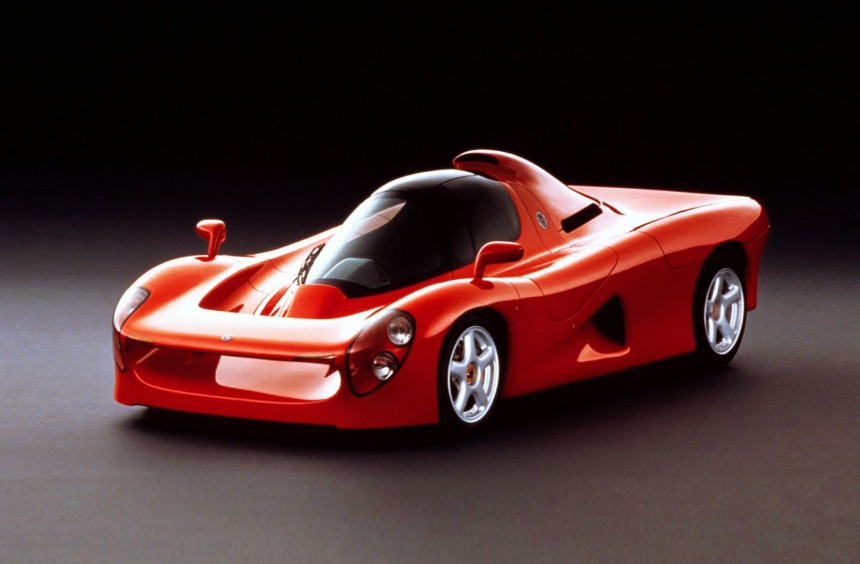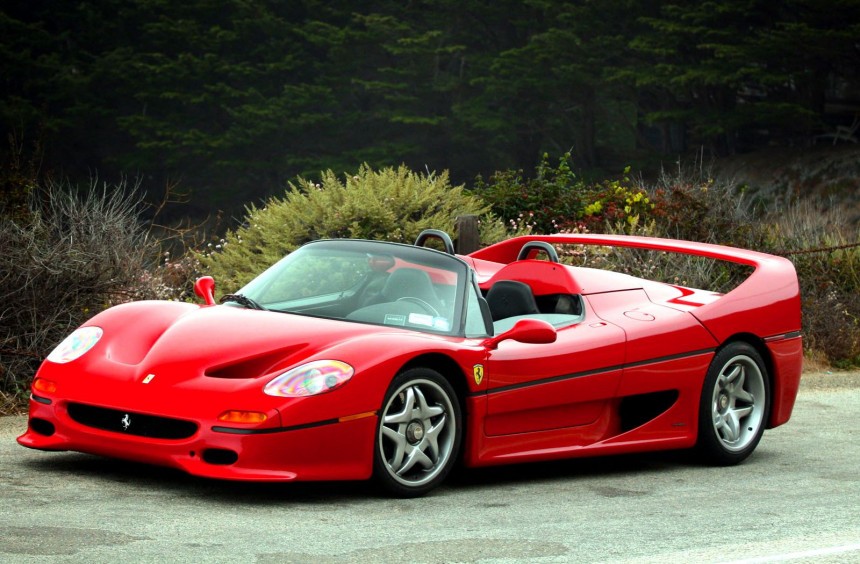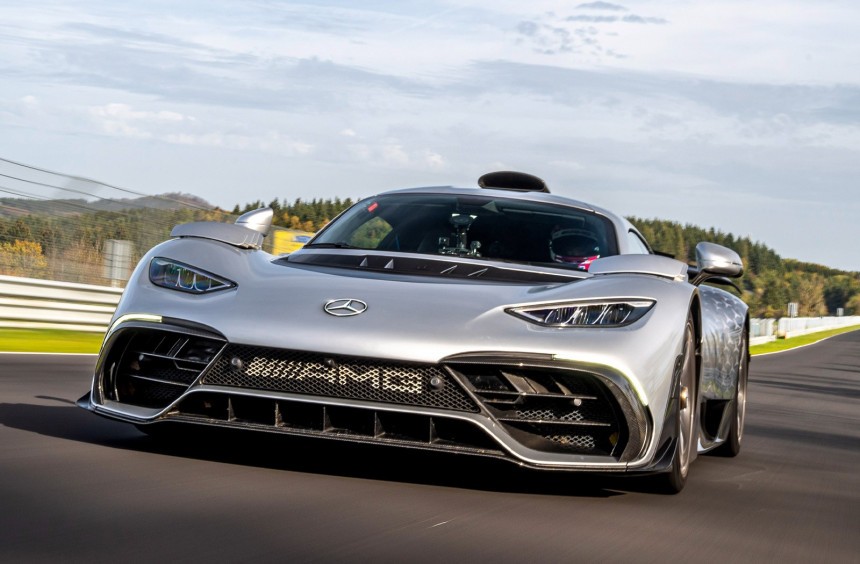The concept of building an F1 car for the road led to the development of many iconic supercars. However, stuffing an actual F1 engine into a road car was only attempted a few times throughout history.
Since its debut in 1950, Formula One has become the world's premier motorsport competition. For more than 70 years, it has been responsible for many innovations that made their way to road cars.
Additionally, the competition has inspired the creation of some epic supercars like the legendary McLaren F1.
Though the F1 used several Formula One-derived technologies, it was powered by a bespoke BMW V12 that had little in common with Formula One engines.
However, the following five cars didn't just borrow Formula One tech but used engines initially designed for the blistering-fast single-seaters.
The first entry on our list is a car that only some enthusiasts outside of Japan have ever heard about.
Revealed in 1989, it was Japanese race car builders Dome's second attempt to create a road-legal supercar, after failing to launch the Zero.
The idea was to not just build a supercar with F1-derived tech like a monocoque chassis and pushrod suspension but actually stuff an F1 engine behind the passenger compartment.
At first, the engine in question was a 3.5-liter flat-12 originally built by Motori Moderni for Subaru's failed Formula One endeavor.
Detuned to 450 hp and mated to a six-speed manual, it propelled the gorgeous Caspita to 62 mph (100 kph) from a standstill in 4.7 seconds.
The car was revised in the early 1990s, receiving a new F1 engine. This time, the unit was a Judd GV 3.5-liter V10 that made 585 hp at 10,500 rpm.
Unfortunately, Dome's obsession with perfection prolonged the development process, and by the time it was ready to start production, the Japanese asset price bubble burst, so the project had to be canceled.
In addition to world-class products like marine engines, side-by-sides, personal watercraft, or musical instruments, Yamaha has made a name for itself by building some of the most epic motorcycles of all time
The Japanese giants have also helped develop and build several automotive engines like Toyota's first production V8 or the iconic Ford SHO V6.
During the late 1980s, the company took its engine-building talents to the world of Formula 1, providing units for Zakspeed and Brabham.
The latter team received a new, state-of-the-art V12 codenamed OX99, which proved uncompetitive. However, instead of binning the engine, Yamaha decided to build a crazy supercar around it.
Unveiled in 1992 and named OX99-11, the close-cockpit single-seater had a curb weight of 2,540 pounds (1,150 kg) thanks to a carbon fiber monocoque nearly identical to those of the era's F1 cars.
The 3.5-liter OX99 V12 mounted in the middle of the chassis was detuned to improve reliability and comply with road-worthy regulations. Despite this, it made a healthy 400 hp at 10,000 rpm.
Like the Caspita, the OX99-11 never made it into production, mainly because of the Japanese asset bubble crisis. Nevertheless, three prototypes were built and showcased at various events.
Though it has struggled for over a decade, Ferrari remains the biggest, most successful manufacturer in Formula One and one of the greatest automotive brands ever.
Back in 1995, a few years before it returned to Formula One dominance, the Italian carmaker unveiled its latest version of an F1 car for the road.
Dubbed F50, in honor of Ferrari's fiftieth anniversary, the new flagship was marketed as the first-ever production car to use an F1 engine.
In truth, the F50's 4.7-liter Tipo F130B DOHC V12 was a derivative of the 3.5-liter Tipo 036 used in the 1990 Ferrari 641 race car.
The powerplant shared the same block design as the F1 unit, but the heads and valvetrains were redesigned for road use.
Mated to a gated six-speed manual, the naturally-aspirated V12 was rated at 512 hp.
Although not an authentic F1 engine fitted into a road car, the F50's unit was as close to one as possible.
When Formula One started switching to turbocharged engines in the early 1980s, McLaren reached out to conglomerate Techniques D'Avant-Garde (TAG) to help finance a new engine.
Designed by Porsche's legendary Hans Mezger, the turbocharged unit, dubbed TTE P01, was an all-aluminum 1.5-liter powerhouse that helped McLaren dominate Formula One from 1984 to 1986.
As you can imagine, Porsche never attempted to stuff it inside a road-going model, but British race car experts Lanzante Limited did.
After acquiring eleven TTE P01 V6 units, previously used by McLaren in Formula One, the company decided to transplant them into restomodded 930s (aka 911 Turbos).
In these absolutely insane cars, the TTE P01 engine has been detuned to around 500 hp to homologate them for the road.
Though it produces less power than a modern 911 Turbo, the TTE P01-V6 equipped Lanzante 930 is arguably the most incredible Porsche restomod in existence.
After teasing us with the Project One show car for years, Mercedes-AMG finally unveiled the production version of the most authentic F1 car for the road on June 1, 2022.
Chock-full of modern F1 tech derived from the F1 W06 race car that dominated the 2015 season, the gorgeous Mercedes-AMG ONE comes with a hybrid drivetrain rated at a humongous 1,049 hp.
At the core of this drivetrain is a slightly modified version of the 1.6-liter PU106B V6 from the race car mentioned above. Tuned for street use and increased reliability, it contributes with no less than 566 hp.
With all the F1-derived technology, the breathtaking hypercar became the fastest production vehicle around the famed Nürburgring Nordschleife, lapping the track in 6:35.183 minutes.
The amazing Mercedes-AMG ONE is currently in production, with 275 units planned.
Additionally, the competition has inspired the creation of some epic supercars like the legendary McLaren F1.
Though the F1 used several Formula One-derived technologies, it was powered by a bespoke BMW V12 that had little in common with Formula One engines.
However, the following five cars didn't just borrow Formula One tech but used engines initially designed for the blistering-fast single-seaters.
Jiotto Caspita
Revealed in 1989, it was Japanese race car builders Dome's second attempt to create a road-legal supercar, after failing to launch the Zero.
The idea was to not just build a supercar with F1-derived tech like a monocoque chassis and pushrod suspension but actually stuff an F1 engine behind the passenger compartment.
At first, the engine in question was a 3.5-liter flat-12 originally built by Motori Moderni for Subaru's failed Formula One endeavor.
Detuned to 450 hp and mated to a six-speed manual, it propelled the gorgeous Caspita to 62 mph (100 kph) from a standstill in 4.7 seconds.
The car was revised in the early 1990s, receiving a new F1 engine. This time, the unit was a Judd GV 3.5-liter V10 that made 585 hp at 10,500 rpm.
Unfortunately, Dome's obsession with perfection prolonged the development process, and by the time it was ready to start production, the Japanese asset price bubble burst, so the project had to be canceled.
Yamaha OX99-11
The Japanese giants have also helped develop and build several automotive engines like Toyota's first production V8 or the iconic Ford SHO V6.
During the late 1980s, the company took its engine-building talents to the world of Formula 1, providing units for Zakspeed and Brabham.
The latter team received a new, state-of-the-art V12 codenamed OX99, which proved uncompetitive. However, instead of binning the engine, Yamaha decided to build a crazy supercar around it.
Unveiled in 1992 and named OX99-11, the close-cockpit single-seater had a curb weight of 2,540 pounds (1,150 kg) thanks to a carbon fiber monocoque nearly identical to those of the era's F1 cars.
The 3.5-liter OX99 V12 mounted in the middle of the chassis was detuned to improve reliability and comply with road-worthy regulations. Despite this, it made a healthy 400 hp at 10,000 rpm.
Like the Caspita, the OX99-11 never made it into production, mainly because of the Japanese asset bubble crisis. Nevertheless, three prototypes were built and showcased at various events.
Ferrari F50
Back in 1995, a few years before it returned to Formula One dominance, the Italian carmaker unveiled its latest version of an F1 car for the road.
Dubbed F50, in honor of Ferrari's fiftieth anniversary, the new flagship was marketed as the first-ever production car to use an F1 engine.
In truth, the F50's 4.7-liter Tipo F130B DOHC V12 was a derivative of the 3.5-liter Tipo 036 used in the 1990 Ferrari 641 race car.
The powerplant shared the same block design as the F1 unit, but the heads and valvetrains were redesigned for road use.
Mated to a gated six-speed manual, the naturally-aspirated V12 was rated at 512 hp.
Although not an authentic F1 engine fitted into a road car, the F50's unit was as close to one as possible.
Lanzante Porsche 930 TAG Turbo
Designed by Porsche's legendary Hans Mezger, the turbocharged unit, dubbed TTE P01, was an all-aluminum 1.5-liter powerhouse that helped McLaren dominate Formula One from 1984 to 1986.
As you can imagine, Porsche never attempted to stuff it inside a road-going model, but British race car experts Lanzante Limited did.
After acquiring eleven TTE P01 V6 units, previously used by McLaren in Formula One, the company decided to transplant them into restomodded 930s (aka 911 Turbos).
In these absolutely insane cars, the TTE P01 engine has been detuned to around 500 hp to homologate them for the road.
Though it produces less power than a modern 911 Turbo, the TTE P01-V6 equipped Lanzante 930 is arguably the most incredible Porsche restomod in existence.
Mercedes-AMG ONE
Chock-full of modern F1 tech derived from the F1 W06 race car that dominated the 2015 season, the gorgeous Mercedes-AMG ONE comes with a hybrid drivetrain rated at a humongous 1,049 hp.
At the core of this drivetrain is a slightly modified version of the 1.6-liter PU106B V6 from the race car mentioned above. Tuned for street use and increased reliability, it contributes with no less than 566 hp.
With all the F1-derived technology, the breathtaking hypercar became the fastest production vehicle around the famed Nürburgring Nordschleife, lapping the track in 6:35.183 minutes.
The amazing Mercedes-AMG ONE is currently in production, with 275 units planned.
